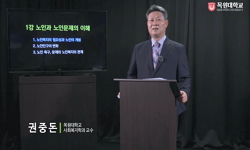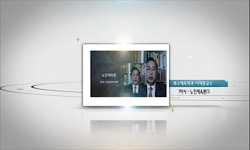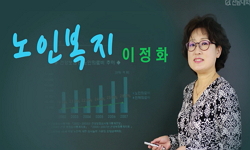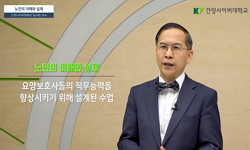나이는 문화현상이며 사회적 구성물이다. 모든 유기체는 연대기적인 시간의 흐름에 따라서 생물학적인 변화를 겪는다. 하지만 노화를 경험하는 존재는 오로지 인간밖에 없다. 노화의 경험...
http://chineseinput.net/에서 pinyin(병음)방식으로 중국어를 변환할 수 있습니다.
변환된 중국어를 복사하여 사용하시면 됩니다.
- 中文 을 입력하시려면 zhongwen을 입력하시고 space를누르시면됩니다.
- 北京 을 입력하시려면 beijing을 입력하시고 space를 누르시면 됩니다.

중국 고대 노인의 정체성과 권위에 대한 연구 = A Study on the Identity and Authority of the Elderly in Ancient China
한글로보기https://www.riss.kr/link?id=A107374882
- 저자
- 발행기관
- 학술지명
- 권호사항
-
발행연도
2021
-
작성언어
-
-
주제어
노화 ; 노인 ; 중국 고대 ; 성인 ; 경로 ; 연령주의 ; 조상숭배 ; 존고 ; 尊古 ; aging ; the elderly ; ancient China ; sage ; reverence for the elderly ; ageism ; ancestor worship ; reverence for old things
-
등재정보
KCI등재
-
자료형태
학술저널
-
수록면
15-58(44쪽)
-
KCI 피인용횟수
0
- 제공처
-
0
상세조회 -
0
다운로드
부가정보
국문 초록 (Abstract)
나이는 문화현상이며 사회적 구성물이다. 모든 유기체는 연대기적인 시간의 흐름에 따라서 생물학적인 변화를 겪는다. 하지만 노화를 경험하는 존재는 오로지 인간밖에 없다. 노화의 경험과 인식, 노화 담론, 노화의 제도와 실천 등은 역사적인 상황과 사회문화적인 조건에 따라서 다양하게 나타난다. 인간이 경험한 노화의 실상을 제대로 살펴보려면 이와 같은 노화의 다양성에 주목할 필요가 있다. 이 글은 중국 고대 노인의 정체성과 사회적 권위에 관하여 연구를 진행하였다. 노인이 문화적 산물이라면 중국 고대의 상황은 어떠했을까. 이 글이 던진 물음은 다음과 같다. 중국 고대는 누구를 노인이라 불렀으며, 노인은 어떤 존재로 인식되었는가. 중국 고대의 노인이 지닌 사회적 지위에 대하여 어떤 서술이 가능할까. 만약 노인이 다른 연령층에 비하여 우월한 권위를 누리는 존재였다면 그렇게 될 수 있었던 배경은 무엇인가. 본 연구는 이와 같은 물음을 해명하기 위하여 상대(商代)와 주대(周代)의 갑골문과 금문 및 후대 문헌 자료를 검토하였다. 중국고대 자료를 통해서 드러난 노인은 신체적으로 허약하며 정신적으로도 쇠락의 길을 걷는 존재이지만, 사회적으로는 매우 높은 권위를 지니고 있었다. 무엇보다 중국 고대 노인은 타인을 다스리고 가르치는 존재로 묘사되고 있었다. 노인에 대한 사회적인 대우도 단지 보호나 부양의 수준을 넘어서 공경과 순종을 기반으로 제공되었다. 본 연구는 중국고대 노인의 사회적 권위가 높았던 배경을 세 가지로 정리하였다. 첫째, 중국 고대는 연령주의 사회였다. 연장자 중심의 연령주의는 노인의 사회적 권위를 제고하였다. 둘째, 조상숭배는 노인의 권위 형성에 영향을 미친 또 하나의 요인이었다. 조상숭배를 통해서 얻은 장수로 말미암아 노인은 조상의 후광을 받은 존재로 인식되었다. 셋째, 노인의 권위는 오래된 것(古)을 중시하는 중국 고대사회의 분위기와 밀접한 연관성을 지니고 있었다. 노인과 오래된 것은 모든 것을 소멸로 이끄는 시간의 벽을 뚫고 살아남았다는 점에서 구조적인 유사점을 공유한다. 최근 종교학에서도 노화, 노년, 노인 등의 개념을 분석범주로 채택하는 연구가 이루어지기 시작하였다. 본고가 이와 같은 연구 경향에 일조할 수 있기를 기대한다.
다국어 초록 (Multilingual Abstract)
All organisms undergo biological changes along with chronological time order. However, only humans are experiencing aging. For humans, age is a cultural phenomenon and a social construct. The experiences and perceptions of aging, discourse about aging...
All organisms undergo biological changes along with chronological time order. However, only humans are experiencing aging. For humans, age is a cultural phenomenon and a social construct. The experiences and perceptions of aging, discourse about aging, institutions and practices for aging appear in various ways depending on the historical situation and sociocultural conditions. To properly examine the reality of aging experienced by humans, it is necessary to pay attention to such diversities of aging. This paper is based on my research on the identity and social authority of the elderly in ancient China. If the human concept of the elderly is a cultural product, what was the cultural situation in ancient China? This paper asks questions as follows. Who was called “elderly” in ancient China, and how were they perceived? What was the social status of the elderly in ancient China? If the elderly held authority over other age groups, what was the background that made that possible? To answer these questions, this study reviewed the materials of oracle inscriptions in the Shang Dynasty, bronze inscriptions in the Zhou Dynasty, and other later literature. The elderly, as described in these materials, were physically weak and mentally declining but held a very high social authority. Most of all, the elderly were described as governing and teaching others. The elderly were also socially treated with respect and obedience beyond the level of protection or support.
There are three reasons for the high social authority of the elderly in ancient China. First, ancient China was an ageist society where the elders were treated better than younger people. Ageism enhanced the social authority of the elderly. Second, ancestor worship influenced the formation of the authority held by the elderly. The elderly was recognized as a being who received the halo of his ancestors through gaining the longevity by ancestor worship. Third, authority of the elders had a close connection with the atmosphere of ancient Chinese society, which revered old things as well as people. The elderly and the old things share a structural similarity in that they have survived the passage of time that leads to extinction. Recently scholars in the field of religious studies have begun to examine concepts such as aging, old age, and the elderly as categories for analysis. I hope that this paper contributes to such research trends.
참고문헌 (Reference)
1 成百曉, "論語集註" 傳統文化硏究會 1994
2 白川靜, "金文通釋 卷四" 白鶴美術館 1973
3 de Beauvoir, Simone, "노년: 나이듦의 의미와 그 위대함" 책세상 2012-, 1970
4 이민숙, "風俗通義" 소명출판 2015
5 김신주, "靑銅器 銘文에 나타난 고대 중국인의 生命觀 연구" 중국어문논역학회 (28) : 303-321, 2011
6 陳初生, "金文常用字典" 陝西人民出版社 1987
7 劉志基, "金文今譯類檢" 廣西敎育出版社 2003
8 김신주, "金文 嘏辭 ‘永令(命)’・‘壽考’・‘壽老’에 대한 재고" 한국중문학회 (39) : 181-200, 2009
9 "釋名"
10 張雅娟, "釋‘考’‘皇考’‘顯考’" (5) : 2004
1 成百曉, "論語集註" 傳統文化硏究會 1994
2 白川靜, "金文通釋 卷四" 白鶴美術館 1973
3 de Beauvoir, Simone, "노년: 나이듦의 의미와 그 위대함" 책세상 2012-, 1970
4 이민숙, "風俗通義" 소명출판 2015
5 김신주, "靑銅器 銘文에 나타난 고대 중국인의 生命觀 연구" 중국어문논역학회 (28) : 303-321, 2011
6 陳初生, "金文常用字典" 陝西人民出版社 1987
7 劉志基, "金文今譯類檢" 廣西敎育出版社 2003
8 김신주, "金文 嘏辭 ‘永令(命)’・‘壽考’・‘壽老’에 대한 재고" 한국중문학회 (39) : 181-200, 2009
9 "釋名"
10 張雅娟, "釋‘考’‘皇考’‘顯考’" (5) : 2004
11 劉雨, "近出殷周金文集錄" 中華書局 2002
12 許鎬九, "說苑" 傳統文化硏究會 2012
13 許愼, "說文解字" 中華書局 1999
14 정상홍, "詩經" 을유문화사 2014
15 許堂, "試考‘考’" (2) : 1986
16 유경은, "西周시기 金文에 보이는 崇祖觀念에 관한 연구" 한국유교학회 (44) : 183-211, 2011
17 박혜숙, "西周 金文 중의 考, 亞祖, 高祖 연구 ― 「牆盤」과 「逨盤」을 중심으로" 중국어문학연구회 (77) : 7-32, 2012
18 김창환, "莊子" 을유문화사 2014
19 김학주, "荀子" 을유문화사 2016
20 王文耀, "簡明金文詞典" 上海辭書出版社 1998
21 孫希旦, "禮記集解" 中華書局 1989
22 李學勤, "禮記正義" 北京大學出版社 1999
23 李相玉, "禮記" 明文堂 1991
24 饒宗頥, "甲骨文通檢(第四冊): 職官人物" 中文大學出版社 1995
25 趙誠, "甲骨文簡明詞典" 中華書局 1988
26 松丸道雄, "甲骨文字字釋綜覽" 東京大學東洋文化硏究所 1993
27 徐中舒, "甲骨文字典" 四川辭書出版社 1998
28 郭沫若, "甲骨文合集 13冊" 中華書局 1982
29 이석명, "淮南子" 소명출판 2013
30 島邦男, "殷墟卜辭硏究" 中國學硏究會 1958
31 中國社會科學院考古硏究所, "殷周金文集成 18冊" 中華書局 1994
32 車相轅, "書經" 明文堂 1985
33 李學勤, "春秋左傳正義" 北京大學出版社 1999
34 鍾柏生, "新收殷周靑銅器銘文曁器影彙編" 藝文印書館 2006
35 李學勤, "尙書正義" 北京大學出版社 1999
36 成百曉, "孟子集註" 傳統文化硏究會 1992
37 李學勤, "孟子注疏" 北京大學出版社 1999
38 馬承源, "商周靑銅器銘文選" 文物出版社 1990
39 張亞初, "商代職官硏究" (13) : 1986
40 김근, "呂氏春秋" 民音社 1995
41 司馬遷, "史記" 中華書局 1999
42 焦培民, "先秦人口硏究" 鄭州大學 2007
43 李學勤, "儀禮注疏" 北京大學出版社 1999
44 박원규, "中國古代 金文의 이해: 殷商兩周 靑銅器 金文 100選 해설" 신아사 2009
45 聶宛忻, "‘耄’和‘考’‘老’: 慧琳《一切經音義》‘轉注’考(一)" (4) : 2002
46 方有國, "‘考’ ‘老’ 解詁與轉注再認識" (6) : 2014
47 馬惠玲, "‘老’語義探微" (3) : 2002
48 周同燕, "‘老’的意義演變及性質漫談" (4) : 2009
49 Knapp, Keith N., "The Ru Reinterpretation of Xiao" 20 : 1995
50 Bavidge, Michael, "The Palgrave Handbook of the Philosophy of Aging" Palgrave Macmillan 2016
51 Tavor, Ori, "Ritual, rejuvenation practices, and the experience of aging in early Chinese religion" 1.1 : 2017
52 McNally, Michael D., "Practicing Protestants: Histories of the Christian Life in America, 1630~1965" Johns Hopkins University Press 2006
53 Kuhn, Dieter, "Perceptions of Antiquity in Chinese Civilization" Edition Forum 2008
54 Mu-Chou Poo, "Perceptions of Antiquity in Chinese Civilization" Edition Forum 2008
55 McNally, Michael D., "Honoring Elders: Aging, Authority, and Ojibwe Religion" Columbia University Press 2009
56 Singleton, Michael, "From Worshipping Ancestors to Respecting Senior Citizens" 63 : 63-, 2014
57 Gullette, Margaret Morganroth, "Ending Ageism, or How not to Shoot Old People" Rutgers University Press 2017
58 Kinney, Anne Behnke, "Early China 18" 18 : 1993
59 Lewis, Mark Edward, "Early China" State University of New York Press 1999
60 Kopytoff, Igor, "Ancestors as Elders in Africa" 41 (41): 2-, 1971
61 Cook, Constance A., "A Source Book of Ancient Chinese Bronze Inscriptions" The Society for the Study of Early China 2016
동일학술지(권/호) 다른 논문
-
한국의 반-신천지 현상에 대한 종교학적 고찰 : ‘비윤리성’ 담론에 대한 정신분석의 ‘윤리’적 독해를 통하여
- 한국종교문화연구소(종교문화비평학회)
- 이정은 ( Lee¸ Jung Eun )
- 2021
- KCI등재
-
요역(徭役)의 관점에서 본 조선 초 승역(僧役)의 이해: 도첩제도의 정비와 관련하여
- 한국종교문화연구소(종교문화비평학회)
- 민순의 ( Min¸ Sun Euy )
- 2021
- KCI등재
-
하늘까지 걸어간 사람: 초마 드 코로스(Csoma de Körös Sandor)를 다시 생각한다
- 한국종교문화연구소(종교문화비평학회)
- 이민용
- 2021
- KCI등재
-
웬디 도니거의 거침없는 신화 비교: 종교 현상으로서 신화 다시 읽기
- 한국종교문화연구소(종교문화비평학회)
- 하정현
- 2021
- KCI등재
분석정보
인용정보 인용지수 설명보기
학술지 이력
| 연월일 | 이력구분 | 이력상세 | 등재구분 |
|---|---|---|---|
| 2026 | 평가예정 | 재인증평가 신청대상 (재인증) | |
| 2020-01-01 | 평가 | 등재학술지 유지 (재인증) |  |
| 2017-01-01 | 평가 | 등재학술지 유지 (계속평가) |  |
| 2013-01-01 | 평가 | 등재학술지 유지 (등재유지) |  |
| 2010-01-01 | 평가 | 등재학술지 선정 (등재후보2차) |  |
| 2009-01-01 | 평가 | 등재후보 1차 PASS (등재후보1차) |  |
| 2008-01-01 | 평가 | 등재후보학술지 유지 (등재후보1차) |  |
| 2006-01-01 | 평가 | 등재후보학술지 선정 (신규평가) |  |
학술지 인용정보
| 기준연도 | WOS-KCI 통합IF(2년) | KCIF(2년) | KCIF(3년) |
|---|---|---|---|
| 2016 | 0.41 | 0.41 | 0.35 |
| KCIF(4년) | KCIF(5년) | 중심성지수(3년) | 즉시성지수 |
| 0.4 | 0.4 | 0.629 | 0.06 |





 KISS
KISS






